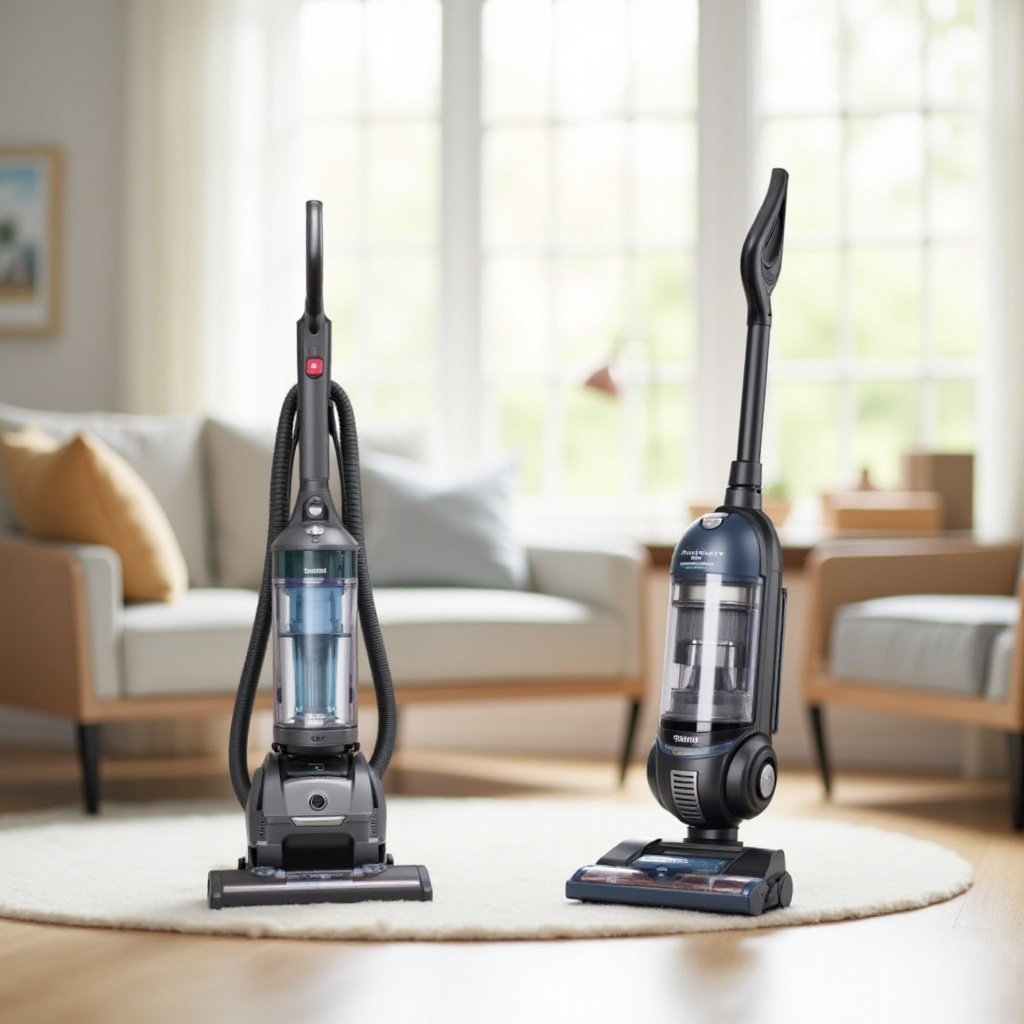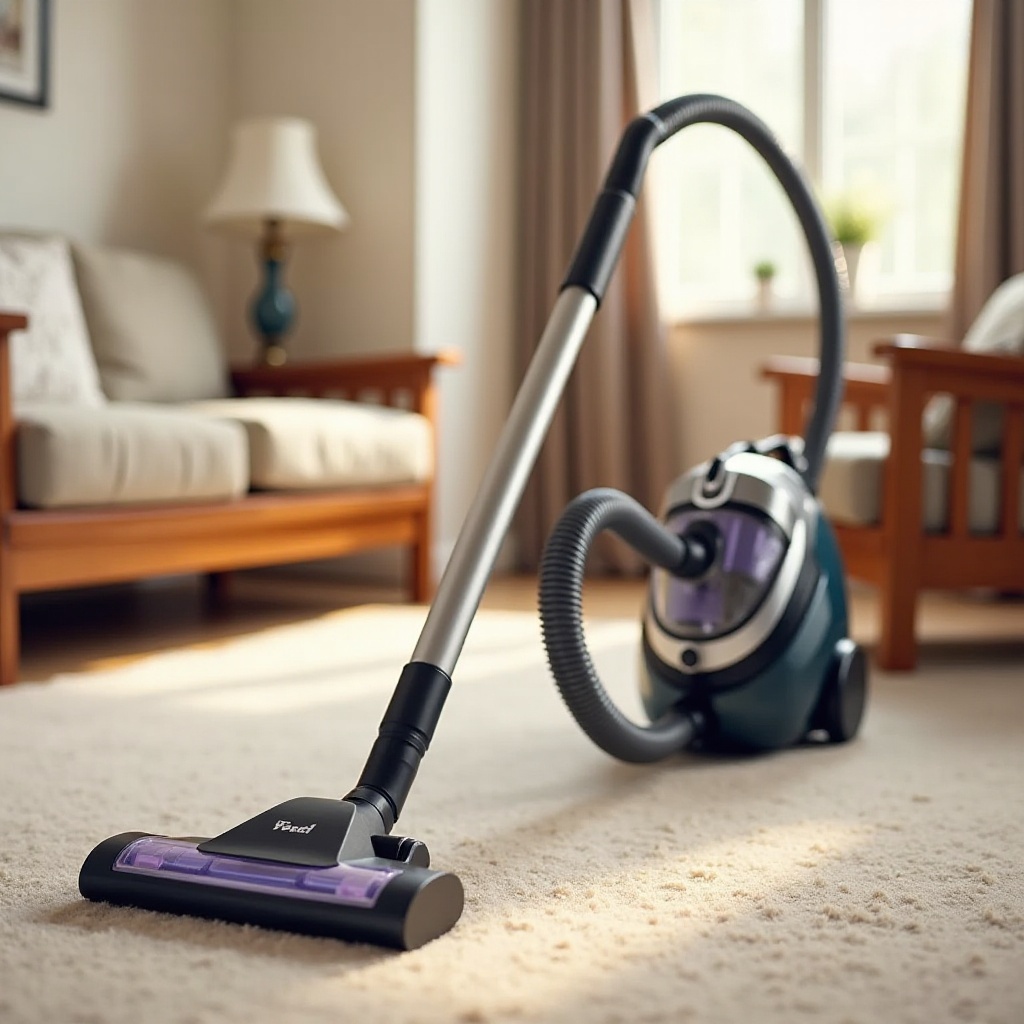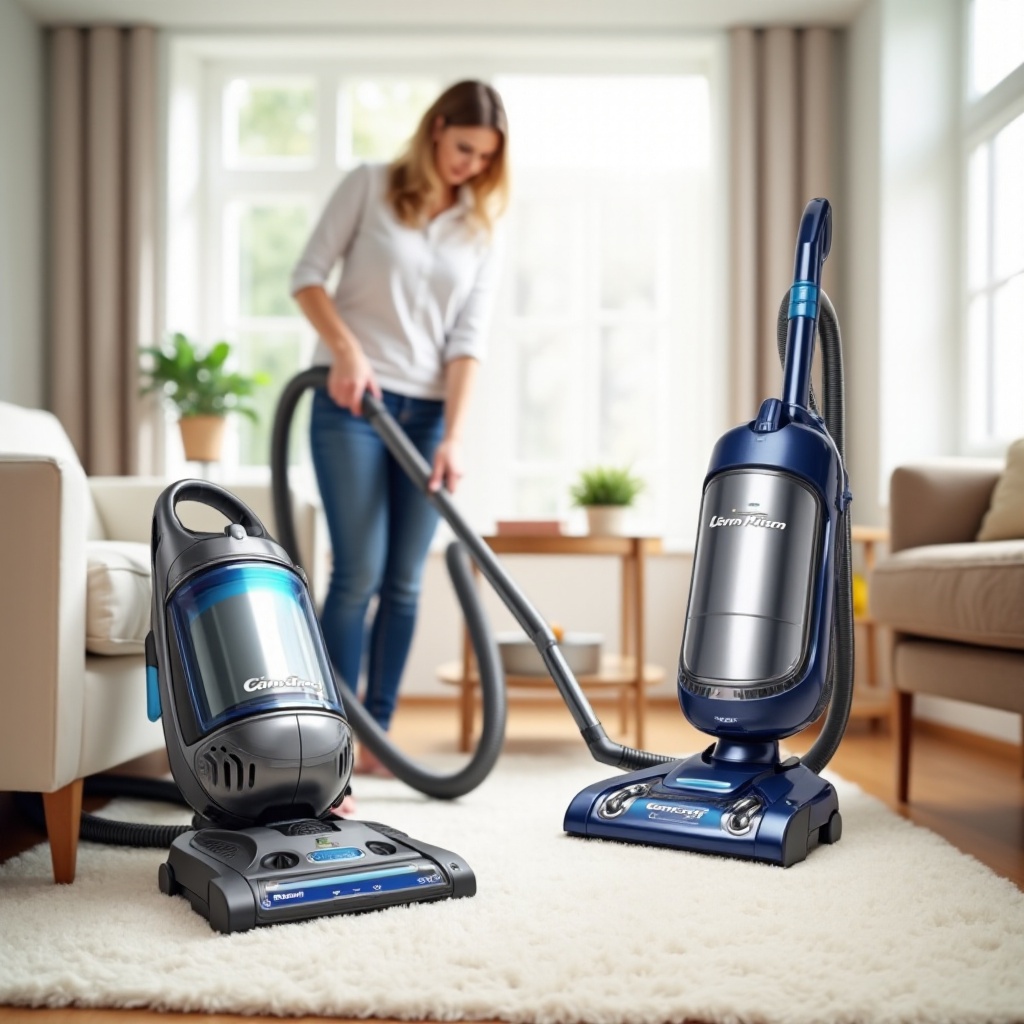Introduction
Vacuum cleaners are essential tools for maintaining a clean home. With numerous models available, choosing the right one can be challenging. Two popular types are canister and upright vacuums, each offering unique benefits. So, which vacuum is best for your cleaning needs? This guide will help you decide by comparing their features, advantages, and drawbacks. By understanding these differences, you can select the vacuum that meets your cleaning requirements.

Understanding Canister Vacuums
Canister vacuums are known for their compact design, featuring a separate canister unit connected to the vacuum head via a hose. This design allows for easy maneuverability, making it ideal for cleaning tight spaces and under furniture. Many homeowners prefer canister vacuums for their versatility and efficiency in diverse home layouts.
These vacuums typically come with various attachments for different cleaning tasks, such as upholstery nozzles, crevice tools, and dusting brushes. The main unit, containing the motor and dust collection system, can be stationary or easily moved on its wheels. This separation of components often results in quieter operation compared to more integrated models.

Pros and Cons of Canister Vacuums
Pros of Canister Vacuums
- Flexibility and Maneuverability: The hose and wand design allows the vacuum head to reach tight spaces, stairs, and under furniture with ease.
- Versatile Attachments: Comes with numerous tools for cleaning various surfaces, including curtains, corners, and upholstery.
- Quiet Operation: The separation between the motor and vacuum head reduces noise levels, making it quieter during use.
- Powerful Suction: Often offers strong suction capabilities, especially for hard floors and delicate surfaces.
Cons of Canister Vacuums
- Bulkier Design: The need to drag the canister unit can make storage and movement cumbersome.
- Hassle with Hose and Cord: The hose and cord can tangle and become unwieldy during use.
- Higher Cost: Quality canister vacuums might come at a higher price point compared to some upright models.
Understanding Upright Vacuums
Upright vacuums are a traditional favorite for many households, known for their single-unit design where the motor and suction head are combined into one body. This type of vacuum is particularly effective on carpeted surfaces, with brushes and rollers that agitate the fibers to loosen dirt and debris.
Upright vacuums are generally easier to store due to their all-in-one form and typically come with simple on-board storage for attachments. They also boast a wider cleaning path, making them suitable for larger open areas. This design favors quick, no-fuss operation, making upright vacuums a go-to choice for straightforward cleaning tasks.
Pros and Cons of Upright Vacuums
Pros of Upright Vacuums
- Convenient Storage: The single-unit design is more compact and easier to store in closets or small spaces.
- Effective on Carpeting: Brushes and rollers work well on carpets, helping to agitate and lift dirt and debris effectively.
- Wide Cleaning Path: The broader vacuum head allows for efficient cleaning of larger floor areas in less time.
- Ease of Use: Easy to operate with minimal setup, making it ideal for quick cleaning sessions.
Cons of Upright Vacuums
- Less Maneuverable: Difficult to navigate tight spaces, stairs, and under furniture due to their bulky design.
- Noisier: The integrated motor and suction head can result in louder operation.
- Limited Attachments: Often comes with fewer accessory tools compared to canister vacuums.
- Heavy: Can feel cumbersome to push and carry, especially if you have a multi-story home.
Canister vs Upright: Head-to-Head Comparison
Both canister and upright vacuums offer robust cleaning capabilities but excel in different areas.
Performance and Suction Power
Canister vacuums generally provide better suction power for bare flooring and delicate rugs due to their motorized tool attachments. Conversely, upright vacuums are specifically designed to perform well on carpeted surfaces, using brushes and rollers for deeper cleaning.
Maneuverability and Ease of Use
Canister vacuums outshine upright models in maneuverability. They can reach beneath furniture, clean stairs, and navigate tight spaces with greater ease. However, upright vacuums have a quicker setup and can cover large, open spaces more efficiently due to their broad cleaning path.
Storage and Maintenance
Upright vacuums are simpler to store because of their compact, all-in-one design. Canister vacuums, while often bulkier and requiring more storage space, offer easier maintenance in terms of emptying dust bins and replacing filters. Upright models might require more frequent belt and brush roll replacements.
Choosing the Right Vacuum for Your Needs
Selecting the right vacuum depends on your home’s layout and cleaning requirements. If you have a lot of carpeted areas, an upright vacuum could be more effective. For homes with mixed flooring or lots of nooks and crannies, a canister vacuum may be the better choice. Consider your storage space availability, noise tolerance, and whether you often clean stairs or hard-to-reach places.

Conclusion
Both canister and upright vacuums have their strengths and weaknesses. Assessing your cleaning habits and home environment will help determine the best choice for you. By focusing on the pros and cons of each, you can make an informed decision tailored to your cleaning needs.
Frequently Asked Questions
Which vacuum is better for carpeted floors, canister or upright?
Upright vacuums are generally better for carpeted floors because of their built-in brushes and rollers designed to deep-clean carpets.
Are canister vacuums more expensive than upright vacuums?
Generally, yes. Quality canister vacuums can be more expensive than upright vacuums due to their advanced features and multiple attachments.
Which vacuum type is better for allergy sufferers?
Canister vacuums are better for allergy sufferers, as their design often includes superior filtration systems and HEPA filters to trap allergens effectively.
